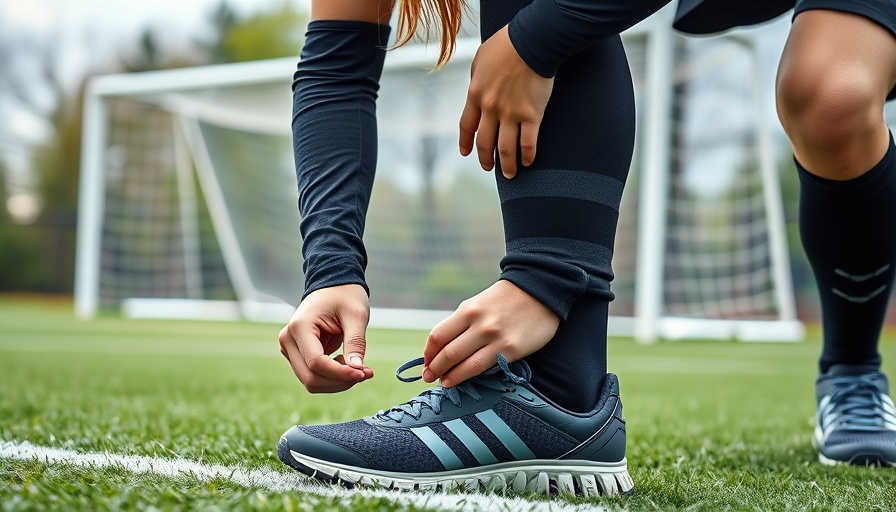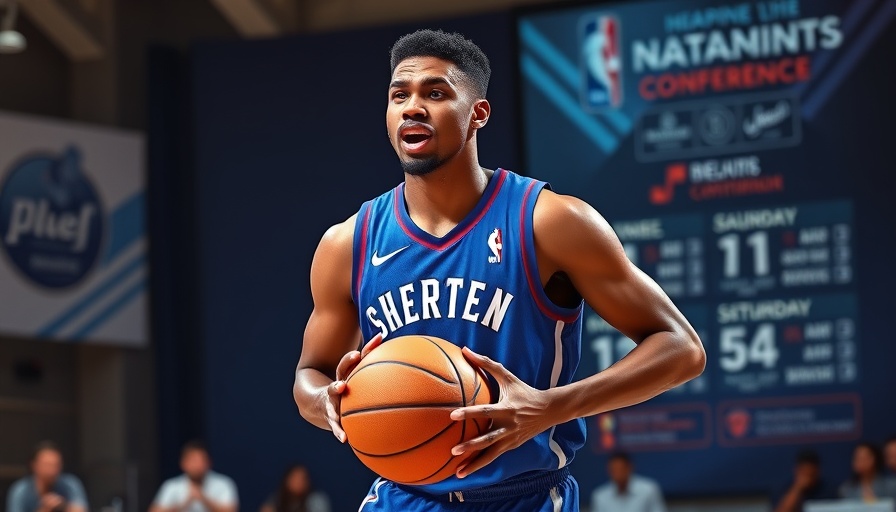
A Game Changer: Enhancing Injury Prevention in Flag Football
The upcoming debut of flag football at the 2028 Olympic Games marks a monumental step for one of the world’s fastest-growing sports. With the sport experiencing a surge in participation—estimated at 20 million globally according to NFL figures—it's important to prioritize player safety as they push their limits on the field. A pioneering study led by the University of Stirling is set to provide vital insights that can help improve injury prevention for these athletes.
Understanding the Physical Demands
The Stirling-led study is groundbreaking, being the first to present comprehensive data on the physical characteristics of elite flag football players. This research highlights the unique body types and composition of athletes in this agile, non-contact sport. Male athletes were found to possess greater muscle and bone mass, while female athletes exhibited higher levels of body fat compared to their male counterparts. This crucial information enables coaches and nutritionists to tailor training and dietary programs to better suit the physical demands of the sport.
More Than Just Numbers: The Value of Comprehensive Training
The findings of this study have implications beyond just injury prevention; they help refine the training regimens for athletes, improving their overall performance. Reference values for muscle mass and body composition can guide coaches in developing safer, more effective training programs and conditioning routines. By integrating these insights, tasks such as strength, agility, and flexibility training can be enhanced, ultimately leading to injury mitigation. For martial arts practitioners, similar principles apply: knowing one’s body and conditioning it accordingly are critical components of effective self-defense and combat training safety routines.
Injury Prevention Strategies: Lessons for Martial Arts
As martial artists often share the same physical demands and compete in high-intensity environments, the strategies developed from this research resonate well within the broader world of combat sports. Emphasizing preventative drills and proper conditioning can not only enhance performance but also build resilience against injuries. Techniques that emphasize flexibility, proper mechanics, and mental focus are essential for safety, echoing the findings of the flag football study. Integrating these principles into martial arts practices can bolster overall athlete wellness and injury avoidance.
Collaborative Efforts for Athlete Welfare
The international collaboration behind this research showcases the importance of collective efforts in sports safety. With support from the International Federation of American Football (IFAF), this study exemplifies how global partnerships can foster athlete welfare. Organizations must utilize findings like these to enhance safety protocols universally. Just as the IFAF aims to ensure the welfare of flag football players, martial arts organizations should similarly prioritize their athletes, employing evidence-based practices to minimize risk. Awareness in injury risk management is crucial, as athletes across all combat sports increasingly navigate similar challenges.
Taking Action: What You Can Do
For coaches and athletes in the martial arts community, now is the time to integrate the takeaways from this study into your training regimens. Evaluate the conditioning programs currently in place and implement injury reduction advice tailored to the athletes' individual needs. Foster a culture around athlete protection techniques, from beginner to competitive levels. Remember, proactive engagement in injury prevention not only safeguards training but also enhances competitiveness and efficiency.
Conclusion: Embracing a Safer Future in Sports
With flag football heading to the Olympics, the focus on athlete safety is more critical than ever. The lessons from this study not only advance injury prevention in flag football but also provide valuable insights for martial arts and other combat sports. As enthusiasts of self-defense and fitness, let’s embrace these findings, ensuring that as we push our physical limits, we also prioritize safety and wellness within our training routines. Embrace the responsibility of educating yourself and your peers—because preventive training approaches can save lives, aiming for excellence while minimizing risk.
 Add Row
Add Row  Add
Add 




Write A Comment